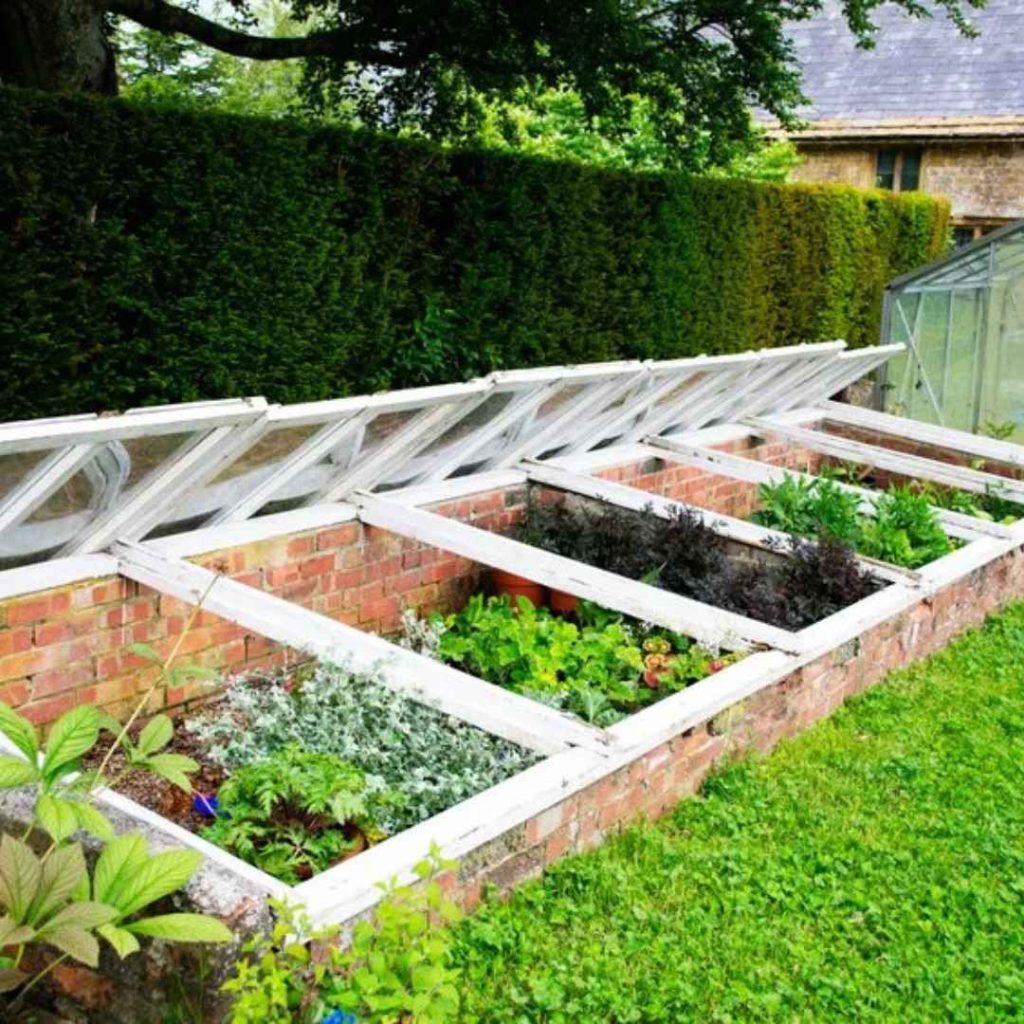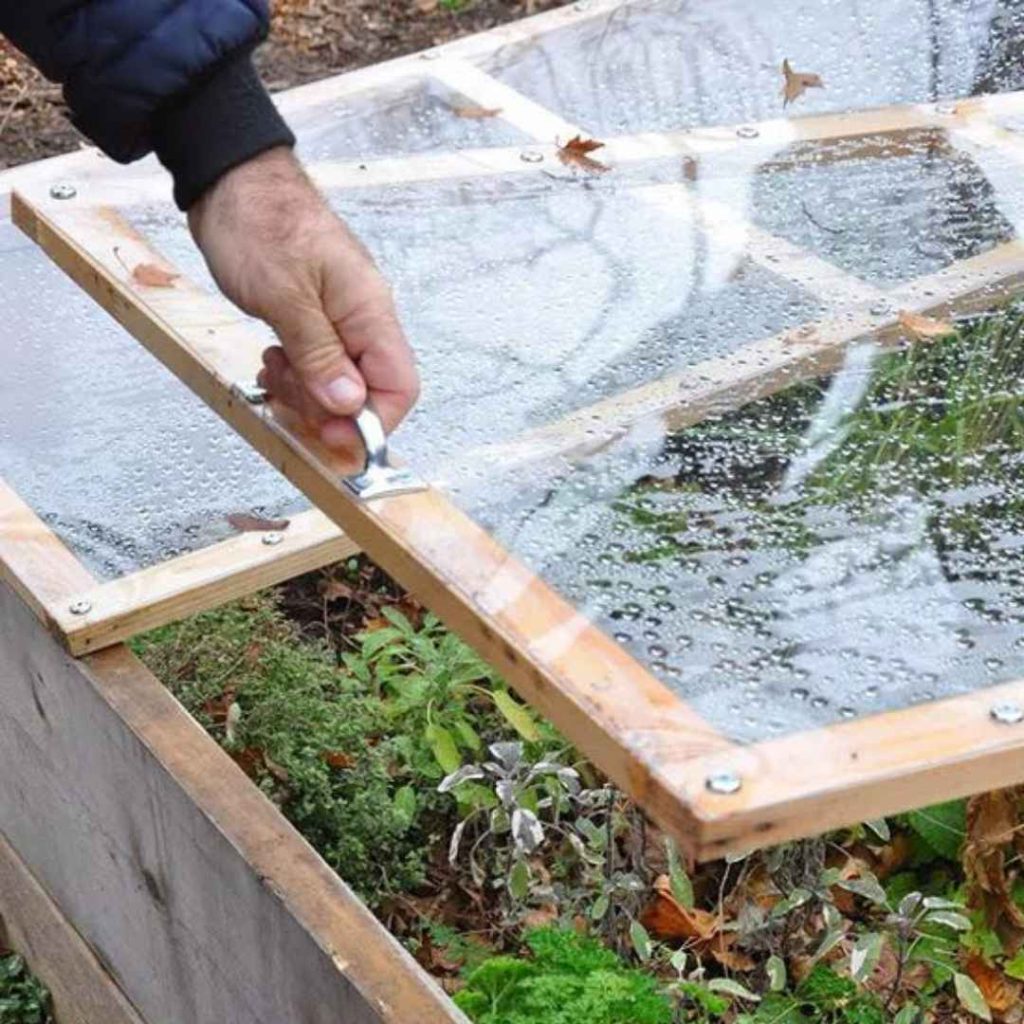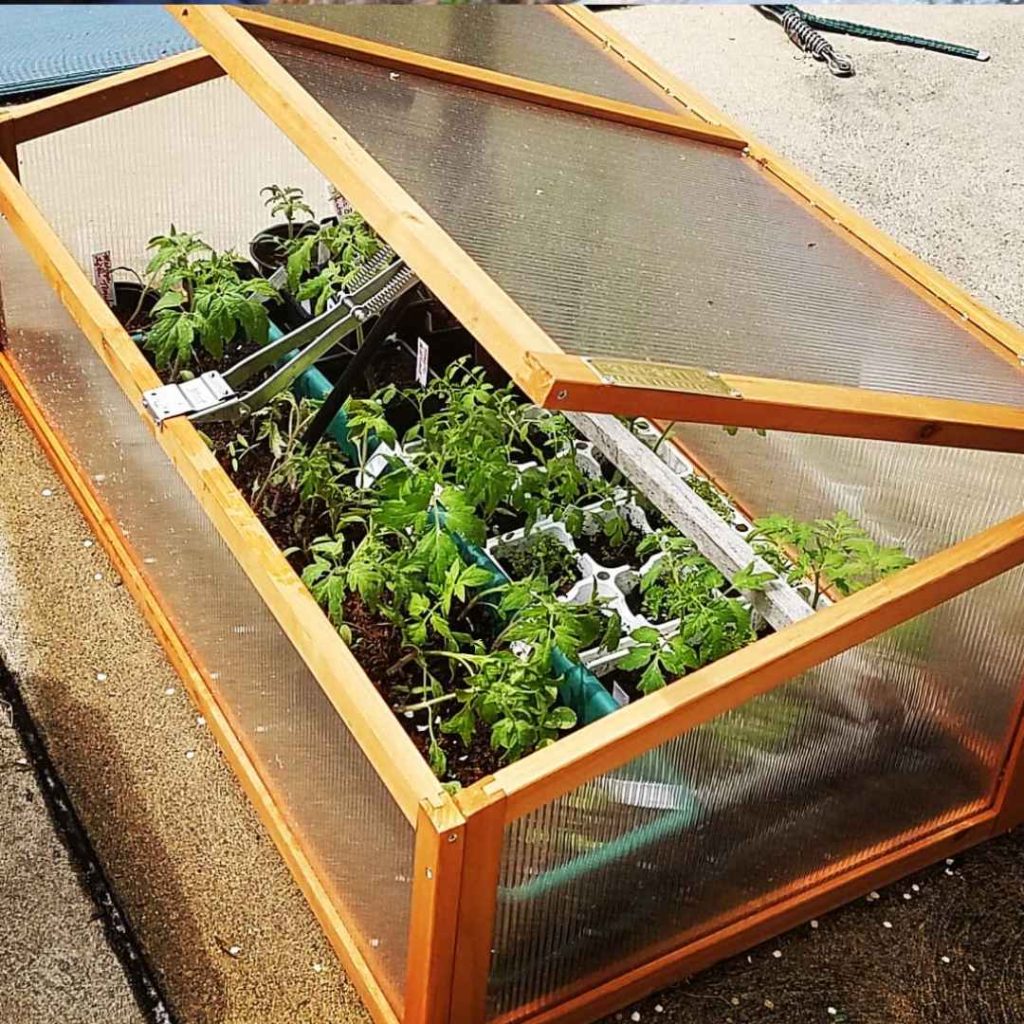Reclaimed supplies like leftover wood, discarded pallets made from timber, and plexiglass or windows can be readily used to construct an inexpensive cold frame for wintertime and autumn planting. The fundamental idea is to construct a well-insulated, shaded box that will retain sunshine and shield vegetation from the cold. You may make a working cold frame at a reasonable price through utilizing these supplies.

To achieve more enjoyment of your vegetable patch, from getting started sooner in the spring to prolonging the season for gardening deep into the autumn and wintertime, a basic cold frame is exactly what you require. It only takes a few hours or two to construct a cold frame, and the supplies are cheap. I’ll show you how to construct a basic cold frame, similar to the one I utilize in my own yard.
Greens like spinach, kale, cauliflower, arugula, lettuce, mustard, and slowly expanding root crops like beetroot and carrots thrive in cold frames, well past the region’s first freezing date. Generally speaking, the interior temperature within the chilly time frame will remain 5–10 degrees higher than the surrounding external environmental conditions.
Describe a Cold Framework:

A container with a vented bottom and a clear covering that functions as a miniature greenhouse by absorbing sunshine and retaining heat energy is called a cold frame. It forms a micro-environmental with warmer topsoil and less susceptibility to cold temperatures when spread over the backyard bed. To get as much radiation from the sun as possible, the cold frame ought to be situated with the bottom edge pointing south.
Constructing An Affordable Cold Frame:
1.
Choosing the right size for your landscaping is the primary task in creating a basic cold frame. A 4-foot-by-4-foot cold frame, for example, can be placed perfectly more than fifty percent of a 4-by-8-foot elevated gardening bed and still be sufficiently tiny to be readily disassembled to be preserved in springtime. You have to limit yourself to the size of your cover if you intend to utilize an opening sash for your venture.
2.
Plywood, hinges for alignment, fasteners or nails, and 1″x1″ or 2″x2″ lumber for each of the four edges are required for any type of lid.
3.
The front of the lumber is the smallest section to cut initially. Using the measurements of a 4-by-4-foot cold framework as a guide, slice a strip of hardwood to measure 4 feet in width and seven inches in height. Cut the back portion to twelve inches in height and 4 feet wide.
The two additional sides will be the same: the top one will be seven inches high, the remaining one will be twelve inches tall, and both will be equally 4 feet broad and smooth on the bottom.
4.
Cutting two sections of lumber measuring 6 inches tall for the leading edge and two that are eleven inches high for the back side of the four components of lumber that will be used to fasten the edges.
To avoid getting in the way of fully closing the top of the container, you would like these intersection pieces to extend just a little bit narrower than the box. Fasten the box with screws.
5.
If you’re building a lid from scrape the idea is to attach sturdy, transparent plastic sheets to a lid that’s the same size as the box’s top. After cutting the 2″x2″ lumber to the appropriate size, lay out this material sheet and secure it with staples.
6.
Make use of a utility knife to trim off any excess synthetic materials. Attach trimmed elements to the top of the polyethylene sheet with nails so that the plastic is positioned between them for more security.
7.
Your cold frame doesn’t have to be symmetrical, and it can be any size to fit your landscape. based on what you plan to produce, it can also be higher, but bear in mind that taller cold frames will have greater difficulty retaining warmth.

Finally: To prevent heat loss, fill the space between the ground’s level and the bottom of the freezing frame if you’re positioning it to sit on the highest point of the raised-bed structure frame. A straightforward approach for maximizing the space is to put additional mulching or straw in.
